The carotid arteries are two main arteries that carry blood from the heart, up through the neck, to the brain. Healthy carotid arteries are smooth and unobstructed, allowing blood to flow freely to the brain and provide oxygen, glucose, and other nutrients.
Over time, carotid arteries can build up plaque, which is mostly made of fat and cholesterol. This plaque narrows the insides of the arteries and makes them stiff in a process commonly referred to as "hardening of the arteries," or atherosclerosis.
Carotid artery disease results when the carotid arteries have become narrow or obstructed, creating a risk of plaque traveling to the brain, where it can cause a stroke.

Carotid Artery Disease and Stroke Risk
Carotid artery disease increases stroke in 3 ways2
- Plaque can severly narrow the carotid artery and restrict blood flow
- Plaque can break off from within the carotid artery and block smaller arteries in the brain
- Blood clots can become wedged in a carotid artery stenosis
In 2020, the following estimates were made:3
Stroke is the fifth leading cause of death globally
Someone dies from a stroke every 3 minutes
Stroke deaths have increased by 24% from 2010 to 2020
Stroke accounted for 1 of every 21 deaths in the United States
Symptoms of a Stroke in Men and Women4
Sudden numbness or weakness in the face, arm, or leg, especially on one side of the body
Sudden confusion, trouble speaking, or difficulty understanding speech
Sudden trouble seeing in one or both eyes
Sudden trouble walking, dizziness, loss of balance, or lack of coordination
Sudden severe headache with no known cause

Carotid Artery Disease Risk Factors5
There are several factors that can increase the chance of developing this condition over time
- High Blood Pressure
- Tobacco Use
- Diabetes
- High blood fat levels
- Family History
- Age
- Obesity

Diagnosing Carotid Artery Disease
There are several tests used to diagnose carotid artery disease and learn more about the size and location of the blockage, including:6
Ultrasound
Also called a duplex ultrasound, this type of test uses sound waves to view how blood is flowing through the arteries and locate areas where they may be blocked or narrowed.

Cerebral Angiography
A minmally invasive procedure that uses a catheter and contrast material to view inside the arteries and get a close look at the blockage.
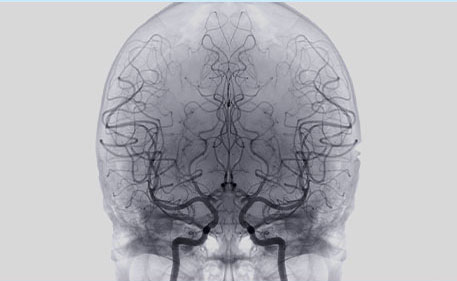
Computed Tomography Angiography (CTA)
This test uses injectable dye and a CT scanner to created detailed images of the arteries. It may be used on patients with pacemakers or stents from other conditions.

Magnetic Resonance Angiography (MRA)
Similar to a CT scan but without using X-rays, this noninvasive test provides detailed images of the arteries.
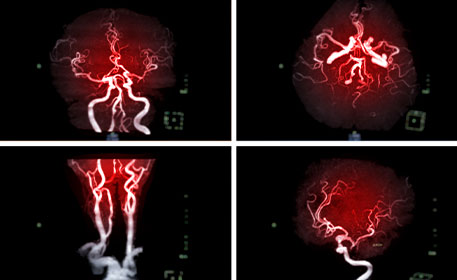
Treatment Options
The main goal of treatment is to halt the progression of the disease. Additional therapies may be considered in more severe cases, such as those causing symptoms of TIA or a stroke.7
Optimal Medical Therapy (OMT)
This treatment combines lifestyle modifications such as diet, exercise, and smoking cessation, with pharmacological therapy, including antiplatelets, lipid-lowering agents, blood pressure reduction, and glycemic control.8

Transfemoral Carotid Artery Stenting (TFCAS)
A surgeon or interventionalist sends a catheter to the narrowed carotid artery in the neck, then places a stent into the vessel to keep the artery from narrowing again.9
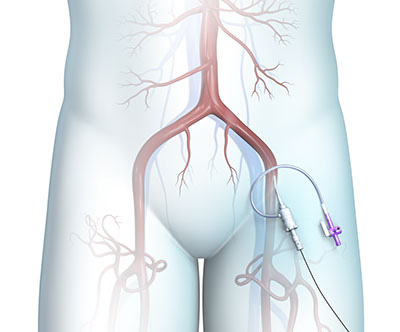
Carotid Endarterectomy (CEA)
A surgeon makes in incision along the front of the neck, opens the carotid artery and removes the plaque, then closes the artery with stitches or a patch made with a vein or artificial materials.9
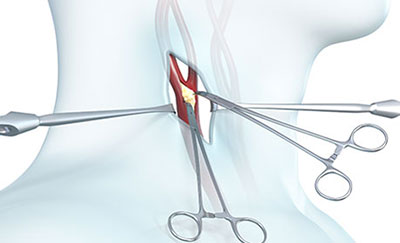
Transcarotid Artery Revascularization (TCAR)
A minimally invasive procedure that can clear blockages and open a narrowed carotid artery. During the TCAR procedure, the surgical team reverses blood flow in the area of the blockage, decreasing the risk of stroke as a surgical balloon and stents are used to reopen the narrowed artery.10
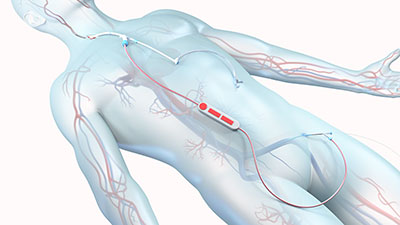
Information and Resources
The Centers for Medicare and Medicaid Services (CMS) has expanded coverage for Carotid Artery Stenting (CAS) procedures to patients for the treatment of carotid artery stenosis in NCD 20.7
More information is available at Abbott Medicare and Medicaid Resources
References
- SVS (n.d.). Carotid Artery Disease Your Vascular Health, https://vascular.org.
- The Texas Heart Institute (2024). Carotid Artery Disease. https://www.texasheart.org.
- Tsao, C., et al. (2023) Heart Disease and Stroke Statistics—2023 Update: A Report from the AHA. Circulation. https://doi.org/10.1161/CIR.0000000000001123.
- CDC (2024). Sign and Symptoms of Stroke. https://www.cdc.gov/stroke.
- Mayo Clinic (2024). Carotid Artery Disease. https://www.mayoclinic.org.
- Cleveland Clinic (2024). Carotid Artery Disease. https://my.clevelandclinic.org.
- Elsayed et al. (2021). Outcomes of carotid revascularization in the treatment of restenosis after prior carotid endarterectomy. Stroke. https://doi.org/10.1161/STROKEAHA.120.033667.
- Hackman (2021). Optimal Medical Management of Asymptomatic Carotid Stenosis, AHA/ASA Journal. https://doi.org/10.1161/STROKEAHA.120.033994.
- Mayo Clinic (2024). Carotid Endarterectomy. https://www.mayoclinic.org.
- Penn Medicine (2024). Transcarotid Artery Revascularization (TCAR), https://www.pennmedicine.org.
MAT-2500281 v2.0







